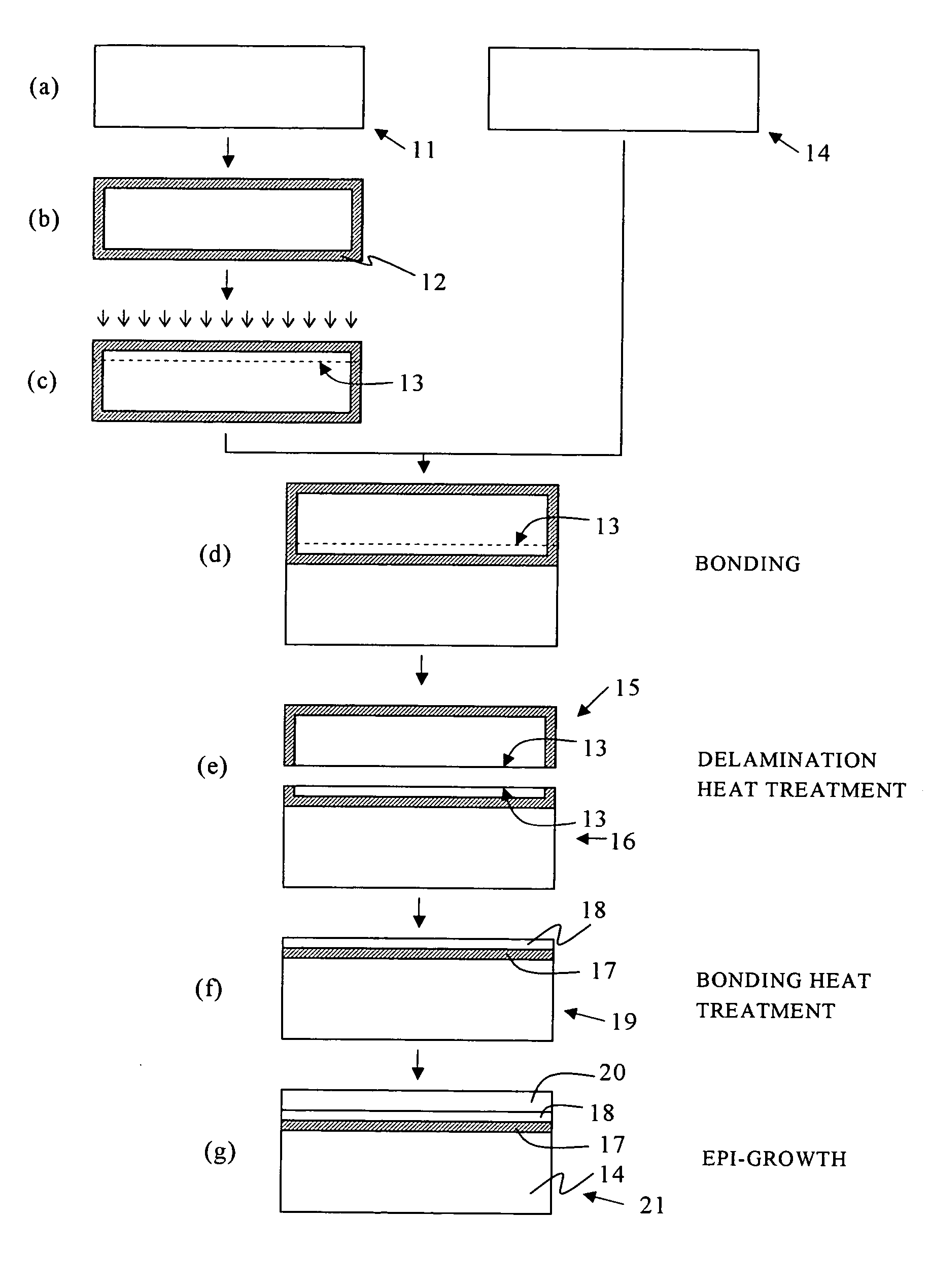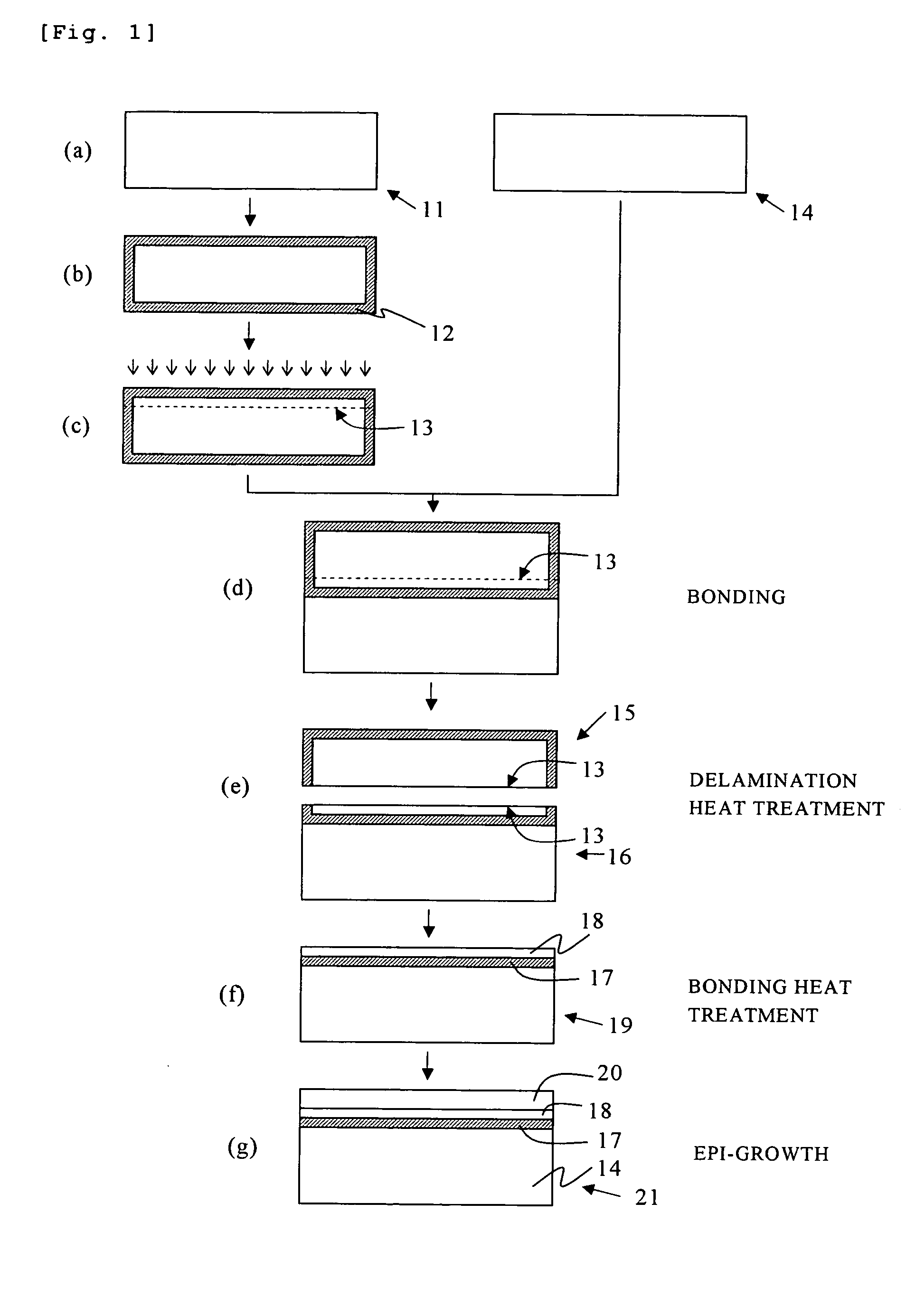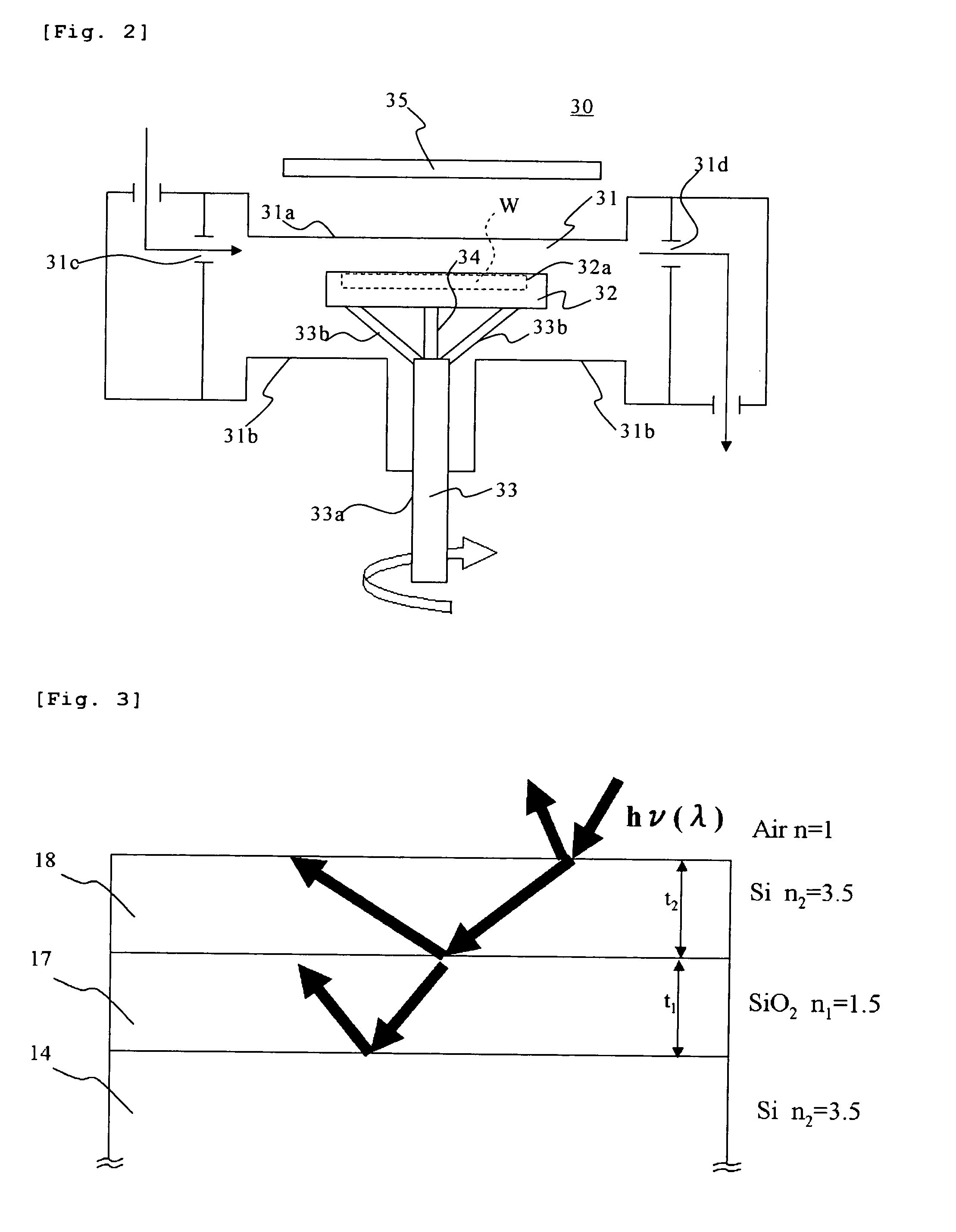Method For Manufacturing Soi Wafer and Soi Wafer
a manufacturing method and technology for soi wafers, applied in semiconductor/solid-state device manufacturing, basic electric elements, electric devices, etc., can solve the problems of complicated process or cost increase, limit the uniformity of soi layer film thickness, and increase the cost of manufacturing, so as to achieve efficient manufacturing and less slip dislocation
- Summary
- Abstract
- Description
- Claims
- Application Information
AI Technical Summary
Benefits of technology
Problems solved by technology
Method used
Image
Examples
example 1
[0068]The present invention will now be more specifically explained with reference to examples of the present invention, but the present invention is not restricted thereto.
[0069]A method for fabricating an SOI wafer serving as a substrate based on the ion implantation delamination method will now be explained with reference to FIG. 1.
[0070]Four thin discoid wafers each formed of a CZ silicon single crystal substrate (a diameter: 200 mm (8 inches), a thickness: 625 μm) having an oxygen concentration of 20 ppma were prepared, and two wafers were determined as bond wafers whilst two wafers were determined as base wafers.
[0071]Then, the two bond wafers were subjected to a heat treatment in an oxidizing atmosphere to form an oxide film on an entire surface of each wafer. At this time, a time of the heat treatment was adjusted to set a thickness of the oxide film to 145 nm. A hydrogen ion was implanted into each of the two bond wafers under conditions where an implantation depth was set ...
example 2
Comparative Example
[0076]Then, seven SOI wafers each of which has a surface reflectivity of 30% to 95% by adjusting a thickness of an oxide film and a thickness of an SOI layer based on the same method as that in Example 1 (an implantation depth: 215 nm) and becomes a substrate were prepared. An epitaxial layer having a thickness of 1000 nm was grown on an SOI of each SOI wafer serving as a substrate under conditions of 1050° C. as a reaction temperature and 30 seconds as a reaction time, thereby manufacturing each SOI wafer.
[0077]FIG. 5 shows a relationship between a total slip length measured after the epitaxial growth and a reflectivity of the SOI wafer before the epitaxial growth. Although the total slip length may possibly exceed 100 mm as an allowable value in the SOI wafer having the reflectivity exceeding 80%, the total slip length is equal to or below the allowable value in the SOI wafer having the reflectivity of 80% or below, and this length is substantially zero in espec...
PUM
 Login to View More
Login to View More Abstract
Description
Claims
Application Information
 Login to View More
Login to View More - R&D
- Intellectual Property
- Life Sciences
- Materials
- Tech Scout
- Unparalleled Data Quality
- Higher Quality Content
- 60% Fewer Hallucinations
Browse by: Latest US Patents, China's latest patents, Technical Efficacy Thesaurus, Application Domain, Technology Topic, Popular Technical Reports.
© 2025 PatSnap. All rights reserved.Legal|Privacy policy|Modern Slavery Act Transparency Statement|Sitemap|About US| Contact US: help@patsnap.com



